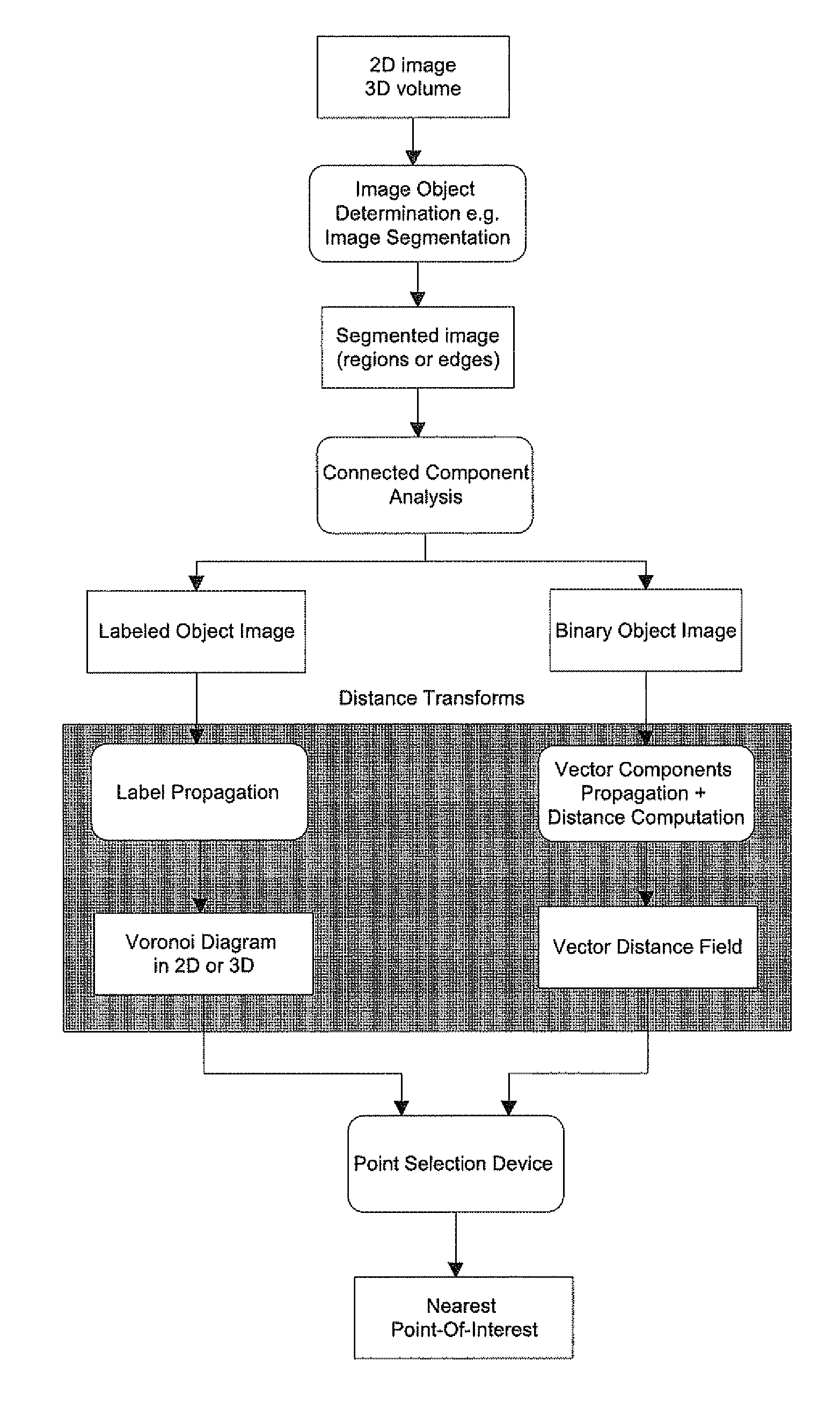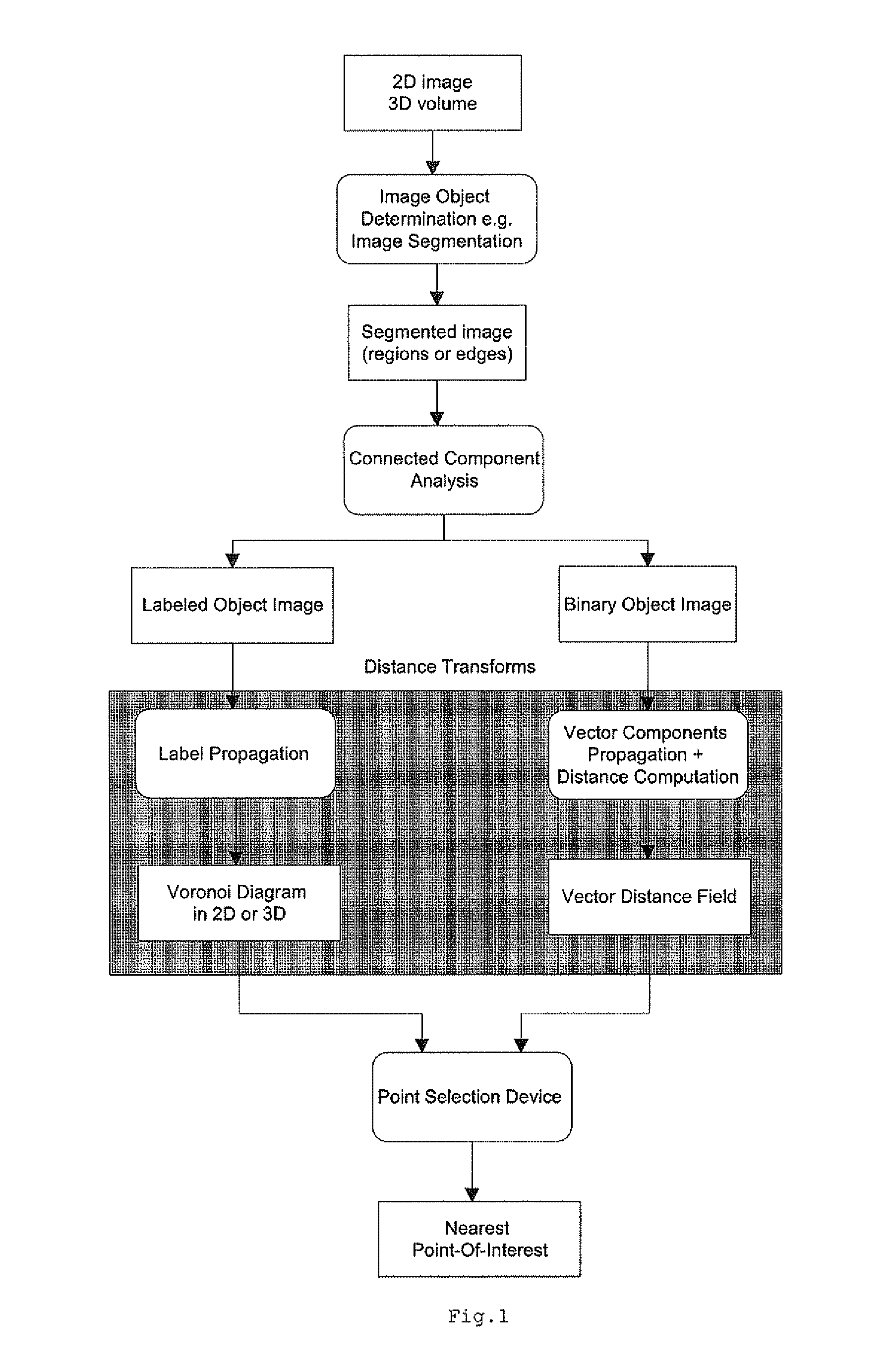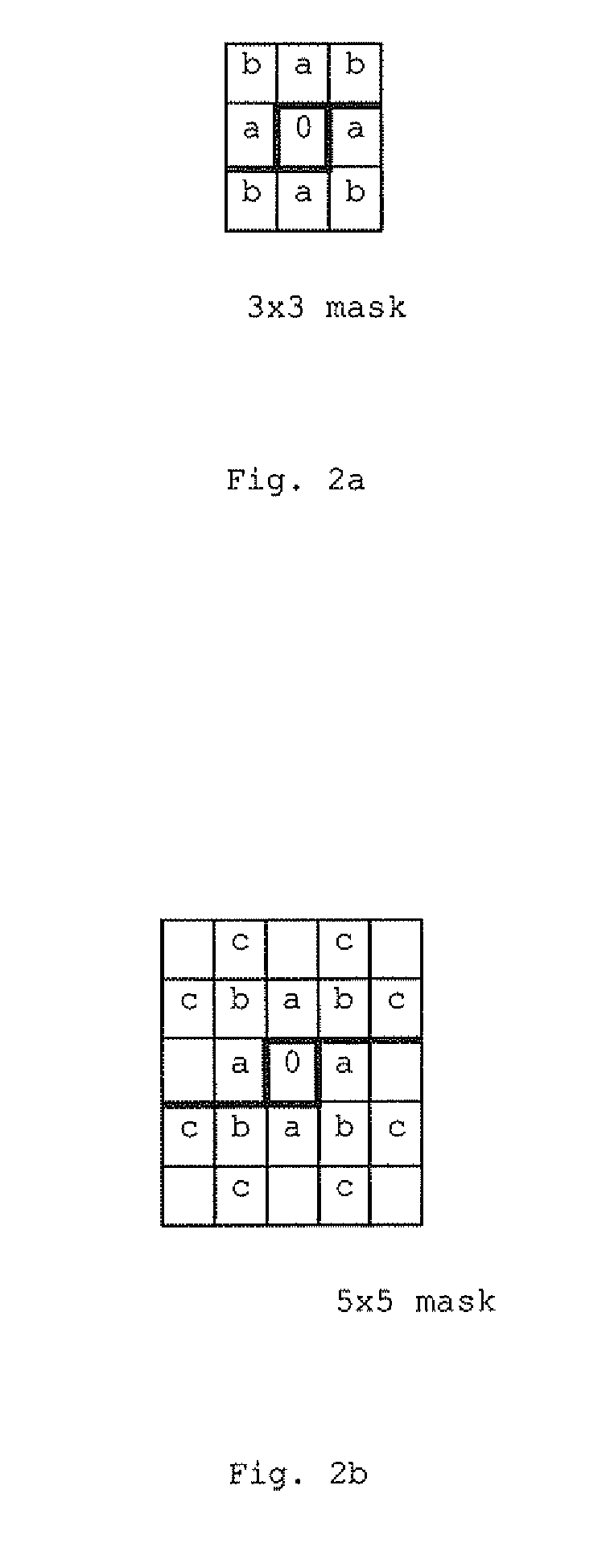Method for point-of-interest attraction in digital images
- Summary
- Abstract
- Description
- Claims
- Application Information
AI Technical Summary
Benefits of technology
Problems solved by technology
Method used
Image
Examples
Embodiment Construction
[0028] According to the present invention, a method is provided for automatic attraction of a point selection device towards a computed point of interest in the image. This point of interest belongs to an anatomic object and will usually lie on the outer border of it. The anatomic object may be represented by a contour (2D) or a surface (3D) or its dual region (2D) or volume (3D) enclosed by it. In two dimensions, the point selection device operates in the plane of the image and is characterized by its row-column position. In three dimensions, the point selection device may either operate on a slice-by-slice viewing basis, or on the 3D volume or surface visualization.
[0029] The point attraction system (FIG. 1) consists of three major building blocks. First, the object pixels are determined in the image using for example an object segmentation method. The result of this step is a separation of all pixels in the image into a class of background pixels not belonging to objects of inte...
PUM
 Login to View More
Login to View More Abstract
Description
Claims
Application Information
 Login to View More
Login to View More - R&D
- Intellectual Property
- Life Sciences
- Materials
- Tech Scout
- Unparalleled Data Quality
- Higher Quality Content
- 60% Fewer Hallucinations
Browse by: Latest US Patents, China's latest patents, Technical Efficacy Thesaurus, Application Domain, Technology Topic, Popular Technical Reports.
© 2025 PatSnap. All rights reserved.Legal|Privacy policy|Modern Slavery Act Transparency Statement|Sitemap|About US| Contact US: help@patsnap.com



